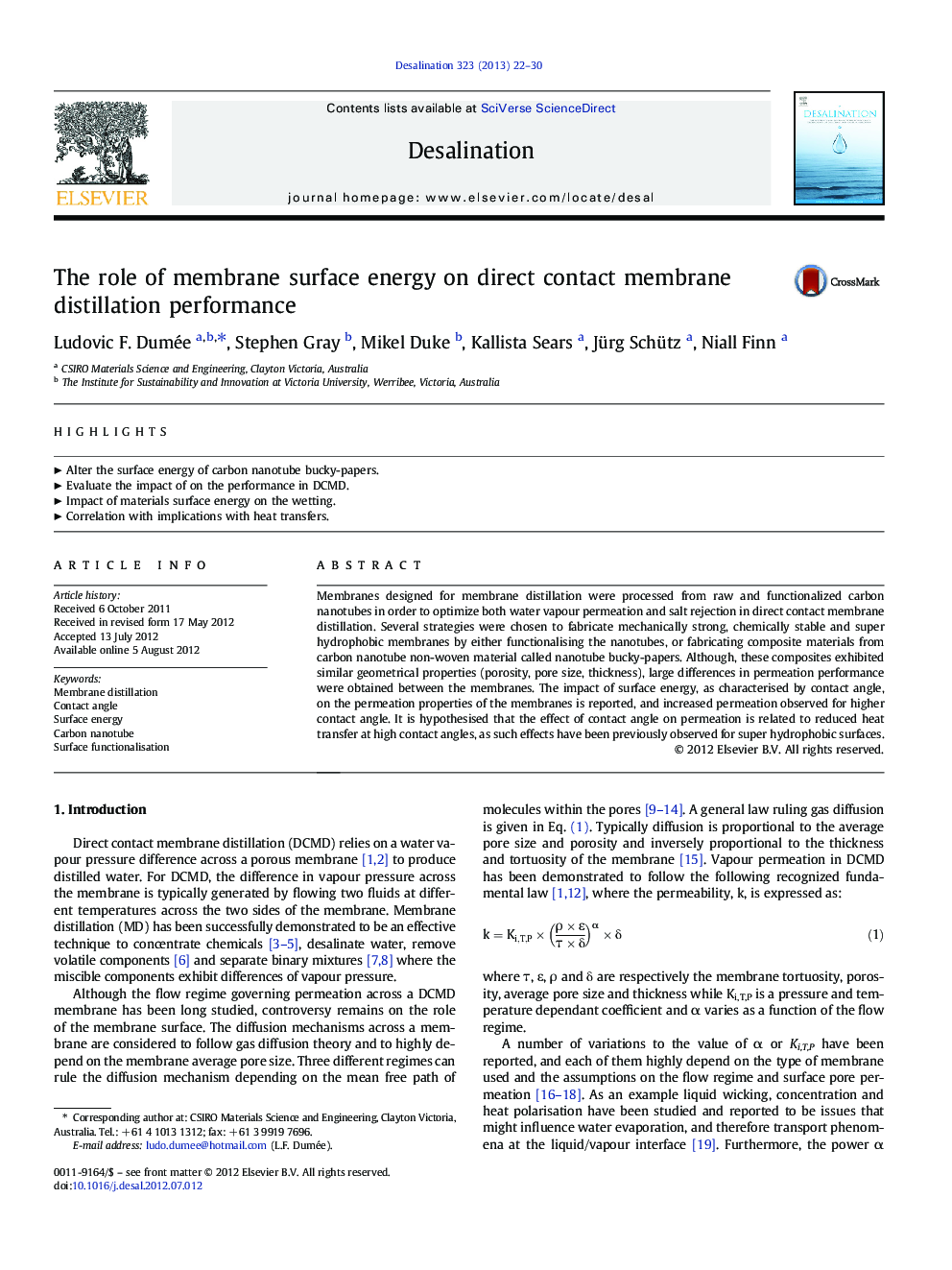| Article ID | Journal | Published Year | Pages | File Type |
|---|---|---|---|---|
| 623773 | Desalination | 2013 | 9 Pages |
Membranes designed for membrane distillation were processed from raw and functionalized carbon nanotubes in order to optimize both water vapour permeation and salt rejection in direct contact membrane distillation. Several strategies were chosen to fabricate mechanically strong, chemically stable and super hydrophobic membranes by either functionalising the nanotubes, or fabricating composite materials from carbon nanotube non-woven material called nanotube bucky-papers. Although, these composites exhibited similar geometrical properties (porosity, pore size, thickness), large differences in permeation performance were obtained between the membranes. The impact of surface energy, as characterised by contact angle, on the permeation properties of the membranes is reported, and increased permeation observed for higher contact angle. It is hypothesised that the effect of contact angle on permeation is related to reduced heat transfer at high contact angles, as such effects have been previously observed for super hydrophobic surfaces.
► Alter the surface energy of carbon nanotube bucky-papers. ► Evaluate the impact of on the performance in DCMD. ► Impact of materials surface energy on the wetting. ► Correlation with implications with heat transfers.
